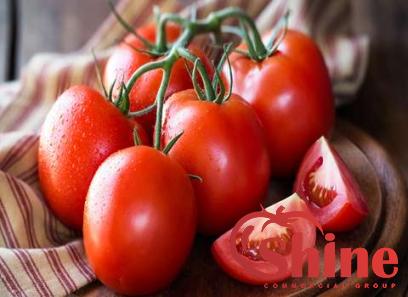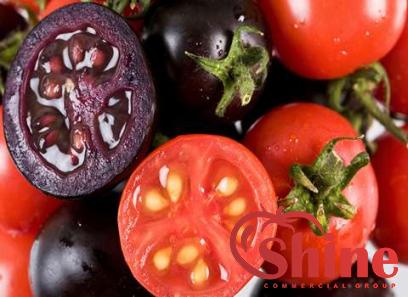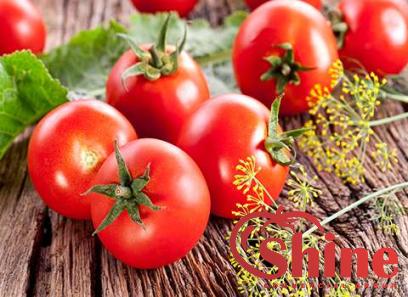Sodium benzoate is one of the additives used in tomato products. Our delicious, vibrant homemade ketchup sauce or paste will leave you in awe. Enriched with fresh ingredients like tomatoes, garlic and ginger, this tomato sauce is rich and delicious. It’s also low-fat, vegan, and gluten-free. Serve ketchup with your favorite side meal or snack. Before I start writing this recipe, let me tell you that the names ketchup and ketchup are used interchangeably in India. And tomato sauce is known in the West as the basis for making tomato pasta.
read more: Tomato Paste Wholesale Suppliers
An easy-to-follow homemade tomato sauce recipe that’s perfect for vegetarians. I bought the Indian brand of ketchup and it tasted like syrup and was moist and crunchy. Which makes me wonder what’s wrong with that ketchup? It doesn’t taste like tomato, it tastes more like syrup. That’s when I decided to make my own tomato sauce with fresh ingredients. A week later I bought 3kg of organic tomatoes and used 2.5kg of homemade tomato paste. Produces 1 liter of tomato paste.
There is a huge difference between the taste, flavor, and aroma of homemade ketchup and store-bought ketchup. Homemade tomato sauce is full of delicious tomatoes, no pancakes, and no extra sugar. This vegan keto recipe was modified from my culinary school notes. Here’s a completely different recipe that includes ginger, garlic, and dried red peppers.

- Sodium benzoate
Sodium benzoate is used as a preservative to prevent the formation of food. It helps keep our products stable for at least two years from the date of purchase, and uses concentrations below 0.5% by volume. While sodium benzoate is considered safe, scientists have shown negative side effects when mixed with ascorbic acid (vitamin C). Their research shows that it turns into benzene, a known carcinogen that can cause cancer.
- Sodium Benzoate Uses
food. In the food industry, sodium benzoate is used to prevent the deterioration of harmful bacteria, yeasts and molds. It also helps to slow or prevent changes in color, flavor, pH and texture, which can help keep food fresh. Add raisins to this sauce for extra sweetness. So you don’t need to add a lot of sugar, and you can avoid store-bought overly sweet ketchup. Use unrefined organic cane sugar or raw sugar for best taste.
Adding the preservative sodium benzoate to the sauce makes it last longer. Store the sauce in a sterilized canning jar. The sauce will keep for about 6 months but is so delicious it will expire before then! You can serve ketchup with a variety of snacks such as pancakes, pancakes, schnitzels, French fries, and more. You can also make preservative-free ketchup, but be sure to properly sterilize the jar. You can also chop or halve the recipe.

How much sodium-benzoate to use in tomato sauce
How to and how much to use sodium benzoate in tomato sauce.
- Cook the tomatoes and garlic together until soft. Return to high heat, add sugar, salt, Indian curry powder, chili powder and vinegar and cook until thickened. Only when it’s ready does the mixture start to appear in the center. Heat and add sodium benzoate solution (a preservative) and store in a sterile airtight jar.
So, what happens when you mix sodium benzoate with phenylacetic acid?
- Sodium benzoate is also often mixed with another chemical, sodium phenylacetate, which is used to treat a condition called hyperammonemia, which is characterized by high levels of ammonia in the blood.
Besides that, what kind of fruit contains sodium benzoate?
- Sodium benzoate is a benzoate that occurs naturally in cranberries, plums, peaches, apples, and other fruits. In its solid form, it is a white, granular or crystalline powder. While benzyl alcohol is an organic alcohol with a hydroxyl group (-OH), compounds related to benzoic acid contain a carboxyl group (-COOH).
Also, what is the chemical name of sodium benzoate?
- (a) Sodium benzoate is the chemical benzoate of soda (C7H5NaO2), which is obtained by neutralizing benzoic acid with sodium bicarbonate, sodium carbonate, or sodium hydroxide.
How much sodium benzoate is in a liter of water?
- If you were referring to the solubility of sodium benzoate in water, I would tell you that sodium benzoate has a solubility of up to 627 grams in a liter of water at 0°C. At higher temperatures, the solubility of sodium benzoate is even higher.

Preservative for tomato ketchup
Sorbet and benzoates are important preservatives in food, but these compounds can also have genotoxic effects, posing health risks to consumers. In this regard, the present study aimed to determine the mass fractions of sorbate and benzoate in Brazilian mustard, ketchup, and tomato paste samples using a well-validated capillary electrophoresis method.
Sorbic acid and benzoic acid and their salts play an important role as preservatives in the food industry. Because of their ability to inhibit yeast, mold, and bacteria, these additives are widely used in foods and beverages such as bread, sauces, soft drinks, cheeses, juices, and fermented products.
Due to the low solubility of sorbic and benzoic acids in water, potassium sorbate and sodium benzoate are preferred due to their higher water solubility (4, 5). Each preservative was used within the optimal pH range, i.e. sorbate was effective at pH = 6.5 or lower, and its antimicrobial activity increased as pH decreased. Meanwhile, benzoates are most effective in the pH range between 2.5 and 4.0.
Until recently, sorbate and benzoate use were safe, although studies in cells and animals suggest that their consumption may be associated with the production of carcinogenic and mutagenic compounds in addition to allergic reactions (7). In this sense, the maximum acceptable daily intake for benzoic acid and its salts is set at 5 and for sorbic acid and its salts at 25 mg/kg body weight per day.
In this regard, regulators have set a maximum level for its use in foods, including sauces, etc., as these preservatives are widely used in these types of products and these foods are often consumed on a daily basis. The European Commission has defined a mass fraction of 1000 mg/kg as the maximum sum of sorbates and benzoates in non-emulsified sauces, e.g., Brazilian legislation also authorizes the use of these preservatives in certain foods, such as mustard and ketchup, with a maximum mass fraction of 1,000 mg/kg of sorbic and benzoic acids or their salts, either alone or in combination.
For ketchup, only sorbic acid and its salts are permitted with a maximum mass fraction of 1000 mg/kg.

How to make tomato ketchup without preservatives
I will explain how to make homemade tomato ketchups without any kind of preservatives. This homemade ketchup will make you wonder why you bought a bottle of ketchup at the store! Made from fresh tomatoes without any preservatives, it’s delicious, healthy and easy to make. Ketchup is a staple in most kitchen stores. Every snack in our house should be served with green salsa and/or ketchup, and there is no better ketchup than homemade ketchup made with fresh tomatoes.
In India, we often use the terms ketchup and chutney interchangeably. When we say ketchup, 90% of the time we mean ketchup, and in the mainland, ketchup mostly means pasta sauce. This is an Indian style ketchup recipe without preservatives. I call it Indian style because I season it with a little homemade Garam masala which really adds flavor to the tomato sauce. We love to sprinkle it on our sandwiches, dip our paratha or samosas, and add it to our tawa pulau too! In fact, no kids menu is complete without ketchup.
But sadly, most kids think ketchup comes from the bottle we buy at the supermarket. “But the ketchup is store bought!” That’s what my 10-year-old niece said when she asked her mom for the ketchup recipe. The idea that tomato paste can be made at home with fresh tomatoes is odd. It’s not their fault, because that’s what happens often. Everything on the market is readily available these days, and it’s easy to put a bottle of ketchup in your cart.

How much citric acid to add to tomato sauce
One of the important question in producing tomato paste is how much citric acid to add? Citric acid was added when the pH of the total product was too high. Most of the time, products containing pure tomatoes don’t need any PH help, as tomatoes should be acid enough, and when you see citric acid added, you’ll usually see water added in some form as well.
Water is added to add bulk to the product and make it cheaper. Some companies add tomato juice instead of water because it looks better on the label, but at the end of the day, tomato juice is just flavored water. Water increases the overall pH, so you have to put it back. When you don’t see citric acid in a can of tomatoes or tomato products, it’s usually a very good indicator.
Citric acid in canned tomatoes is an insurance that covers the cost and lowers the bar without making customers sick. I’m American, but I’ve traveled. Factory conditions in North America are different from those in Europe. They are dirtier and more “good value”. Therefore, American companies will take additional steps to ensure the security that traditional European methods and practices naturally provide.
For example, American eggs are kept in filthy, (relatively) cramped cages on which feces and food debris are immediately dripping. These eggs must be washed to remove the natural mucus layer that protects the eggs. This means that American eggs require a refrigerator, while European eggs do not. Technically, American eggs are “cleaner,” but the story behind it is clear.
American tomato puree may contain fruit from the ground, overripe fruit, fruit with rotted parts removed (hopefully), etc. They then use chemical and physical processes (microwaves, UV light, pasteurization, etc.) to ensure that these potentially dangerous supplies do not cause disease. Taste suffers, but cost can be reduced.

How much sodium benzoate to use in sauce
In the recipe of sauce it is important to know how much of each ingredient should be used. To prepare hot sauce, combine 1 teaspoon boiling water with 14 teaspoons sodium benzoate in a small mixing bowl. Allow the sodium benzoate to dissolve completely, then pour into the simmering tomato sauce and toss to coat. If you don’t like using preservatives, you can make a small amount of the sauce and store it in a sterilized glass jar. Sodium benzoate is generally considered safe and can be used in a variety of applications as an antimicrobial and flavoring ingredient in food at concentrations up to 0.1%.
It is also generally regarded as safe (GRAS) when used as a preservative in feed. Refrigeration is the best place to keep your homemade hot sauce after. Hot bath canning can be used to preserve hot sauce as long as the pH of the sauce is low enough. Properly sterilized and packaged hot sauce packages should last on the shelf for up to a year if stored in a cool, dark place (or refrigerator). When mixed with other substances, like salad dressings or most soft drinks, it’s very strong. The compound is also used in winemaking to stop the fermentation process.

Acidic foods, such as soft drinks (carbonated), jams, fruit juices (citric acid), pickles, and sauces, are the most common applications of citric acid. Vinegar and sugar are excellent food preservatives. You should be fine, as long as you use a sterilized jar, you can cook for twenty minutes, add the sauce, seal, and cook for another ten minutes. Bottles/jars should be stored in a cool, dark place out of direct sunlight.
One of the most beneficial properties of food preservatives is that they serve the dual function of preservative and flavor enhancer, especially when used with the right ingredients. The use of sodium benzoate in food is a good example of this principle. The presence of carboxyl groups in the chemical is required for the decarboxylation process to occur. Therefore, when sodium benzoate and soda lime are heated together, the starting chemical produced is benzene.










Your comment submitted.